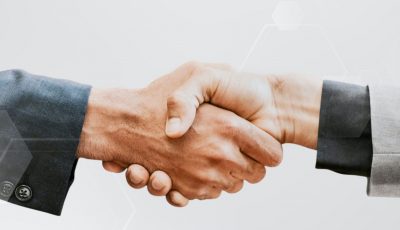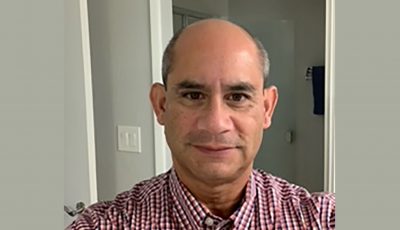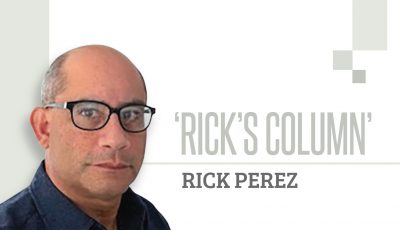Landscapes of World War II: Saipan was and remains a most valuable Pacific island to the American military
Liberation Day events, barbecues, ceremonies, and parties continue as our Chamorro Pacific Islander civilization celebrates Liberation Day festivities. This is the perfect time for our community to continue to revisit World War II-related history in the Pacific because our beautiful Mariana island of Saipan was quite the focus during this very violent conflict.
For starters, in 1941 our ancient Marianas Pacific Islands chain, notwithstanding Guam, was populated mostly by Japanese citizens, followed by our ancient Chamorro Pacific Islanders. Our island chain in 1941 was home to the production of corn, sugar, and whiskey intended for Japanese consumption. Saipan at the time was not viewed by the Japanese government as some remote Pacific Ocean colony of military importance because it was considered Japanese homeland soil by governmental leaders.
Many of our grandparents, and great uncles and aunts who moved from Guam to Saipan or vice-versa made regular visits to see family and friends. By the time World War II started, it was only 40 years since the Americans took Guam for themselves and our families located throughout the island chain remained in relatively close touch.
The deadly fight on Saipan and some historically significant points to share
One significant point about World War II that pertains to our island chain is that about 550 U.S. military ships sailed to the Marianas preparing to fight the Japanese, populated with approximately 130,000 onboard American military personnel, the vast majority of whom were teenagers and young men. By the time war started on Saipan, the American military had already severely crippled Japan’s fleet for a variety of reasons.
Many things went wrong for the Japanese military on Saipan when it came to preparing for war against the U.S. The Japanese Army was in the process of sending thousands of additional soldiers from Japan to Saipan in preparation to fight the Americans but many of the vessels carrying Japanese personnel were sunk by U.S. submarines.
Second, the Japanese had extensively planned for, organized, and moved its submarine fleet to position itself east of our Mariana Islands in preparation to attack the U.S. Navy ships and submarines. This effort did not produce massive numbers of American surface ship sinkings because the U.S. interfered and confused the Japanese Navy about its intentions.
Several Japanese multiple engine seaplanes were also shot down by American military aircraft, placing the Japanese military in an overall position that made it difficult to understand what the U.S. was planning to do militarily.
The Americans also made mistakes, grossly underestimating the numbers of Japanese military personnel on Saipan. The bloody fighting on Saipan would have been much worse if Japan was able to get the additional thousands of troops to the island as originally intended.
How the Americans trained to fight before actually invading our ancient Pacific Island home
The fight for the Marianas was not an undertaking done on the fly.
The U.S. Navy was doing all kinds of preparation work in anticipation of invading Saipan since 1943. The Navy practiced how it was to invade Saipan by conducting mock beach landings at Maalaea Bay on Maui. The Navy also practiced live aerial bombardment runs on Kahoolawe Island, near Maui. All this preparation work was done because the Navy keenly understood the strategic value of Saipan and Tinian, which were ideal for sustaining and growing additional military airfields that had immense value toward winning the war against Japan.
The American military used B-24 bomber aircraft to photograph every square inch of our ancient Mariana Islands chain prior to the invasion of Saipan and follow-on operations. The Navy understood that unlike previous Pacific Island battles fought outside the Mariana Islands, more effort would be required in taking the Marianas because the presumption was more danger existed because more Japanese troops and landmass increased the total war risk profile.
While all this was taking place, the Navy also had no clue as to where the Japanese fleet was located prior to the fight on Saipan. It was only after the Hawaii-based staff of Fleet Adm. Chester Nimitz did the Navy figure out the precise location of the Japanese fleet prior to the commencement of the battle of Saipan.
Our small island saw the same weapons of war that were used in the European theater of operations
The extremely high levels of violence and killing experienced by the Americans, the Japanese and our Chamorro and Carolinian Pacific Islanders on Saipan (many times used as surrendering decoys forced by Japanese Army personnel) were attributed to massive pre-invasion naval gunfire shelling of Saipan beaches, use of heavy tanks by the Japanese and medium tanks by the Americans, use of tracked landing vehicles by the American Marines and use of rifles, mortars, grenades, anti-tank rockets, machine guns, and artillery shelling that had taken place throughout our tiny island.
Imagining the visual depictions of how this played out are daunting because Saipan is such a small landmass.
Some things we can take away from our historic experience of hot war and apply to today
There are many lessons to learn from what took place on Saipan during World War II.
War is deadly and crippling. Saipan was a major battle location for several reasons. During World War II it was viewed by the United States as the inner empire of Japan.
Today, Saipan and our Mariana Islands homelands are viewed by the Chinese as part of the second island chain, which is a demarcation crafted by Chinese military and governmental officials.
The point here is that over seven decades ago, our Mariana Islands chain was important to both the United States and Japan. Today, our Mariana Islands chain is equally important to the United States and now to China.
One other point to consider is that during World War II there was much uncertainty. Presently, our high technology environment and reliance on technological change makes today’s warfighting space equally if not more ambiguous because more things can potentially go wrong.
Perhaps the most important thing to remember is that our families suffered greatly, our families from different islands were forced to engage in activities that hurt other families, especially those relatives in Guam, any immediate family members died for a variety of reasons. We must remember. Happy Liberation Day fellow Chamorros.


























